KonMari: Life-changing magic, one year later
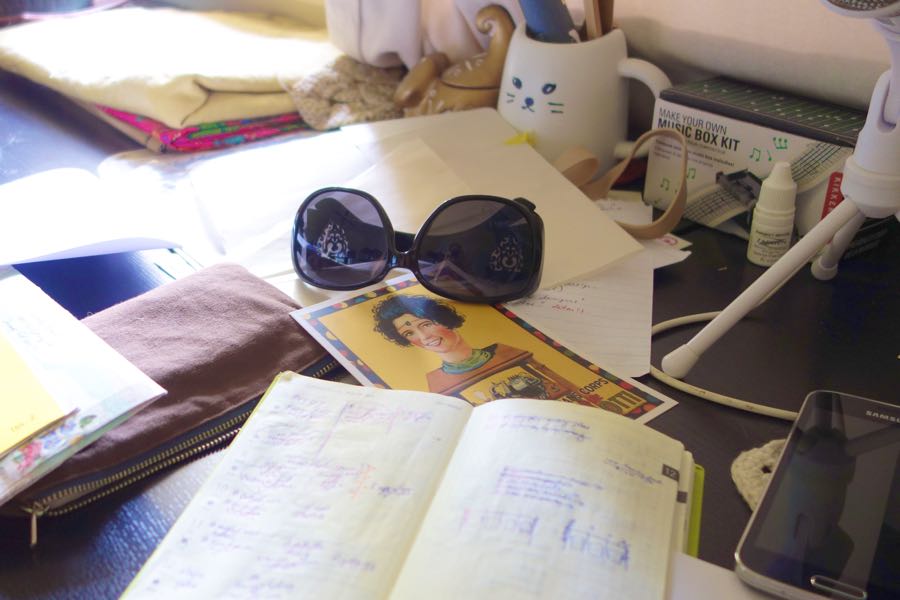
Just over a year ago, I tried the konmari method for sorting out my home and life. For anyone who hasn't encountered this yet, it's a system of cleaning house based on one simple principle: joy. Here's some reading to bring you up to speed:
- The Economics of Tidying Up (The Atlantic)
- Konmari: The Life-Changing Magic of Tidying Up (ChiGarden)
- 5 life-changing lessons the KonMari decluttering method taught me (Happier Inc.)
So, let's be honest here. My house is still a mess. Let me show you.
Be warned, these photos are nowhere near 'social media perfect', which I feel makes them important to share. After a year, I think, taken seriously, konmari will lead to positive changes in your life, but not through magic, and not guaranteeing a magazine aesthetic. But I'll cover that as we go.
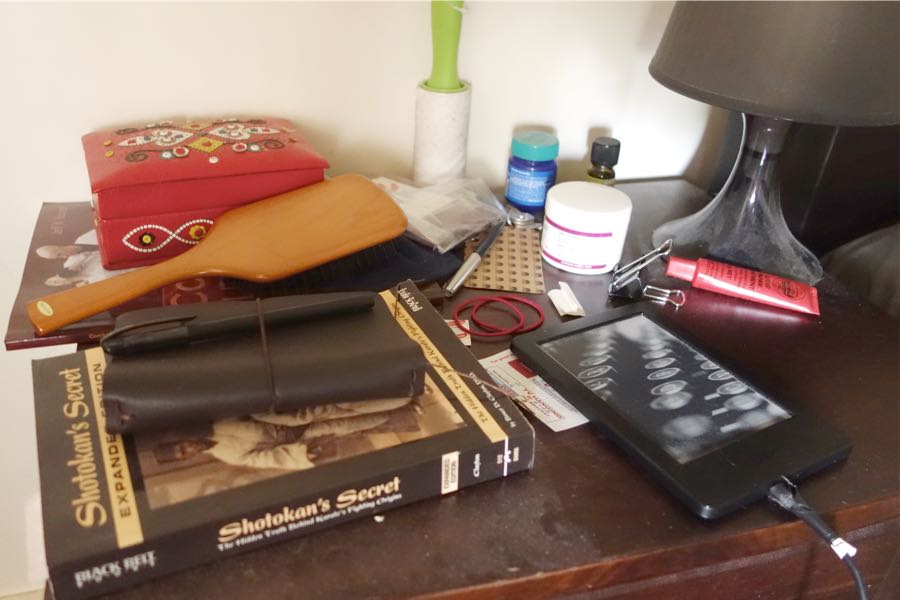
Here is my bedside table with books I'm reading, a junk box, junk that hasn't yet been put in the junk box, emergency topicals (Vicks, lip balm, moisturiser, tea tree oil), and bits and pieces that don't belong but ended up here by accident.

My messy desk.
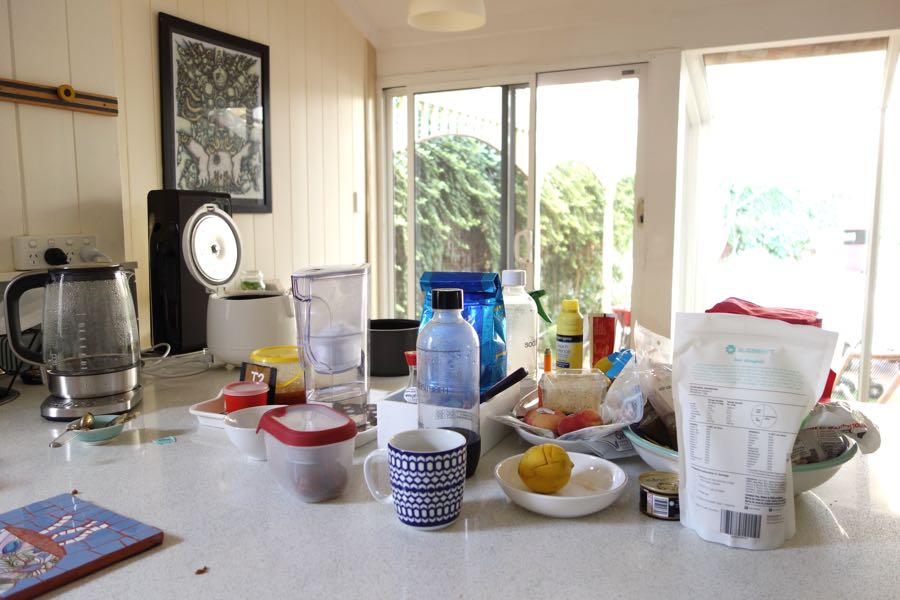
Our kitchen bench is almost always cluttered. There's a caveat here I'll discuss in a moment, but first, let's run through the mess. Everything left out falls into one or more of these categories: Heavily used, recently used, in urgent need of use, or will probably be used in a few hours. Sometimes we put out stuff that we aren't in the habit of using, but want to use more.
Looks awful, doesn't it? I've learned sometimes I need mess to function properly. Partly as a visual thinker, and partly because I like to assess my 'usage trends' in a new environment. This configuration of clutter has changed 4 times since we moved here last April. I'd really like to find a definitive system of organising this space, but nothing's felt right so far. I have more to say on this too in a moment.
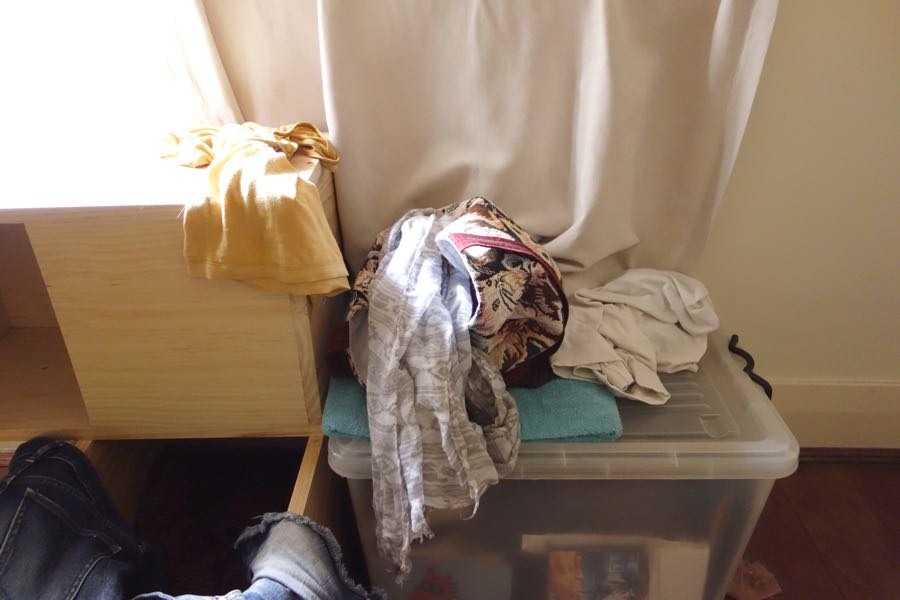
Now, this is the worst. To me, it's the antithesis of what I imagined a konmari life to be. However, you can see some semblance of order inside that plastic crate. There are pockets of order elsewhere too.
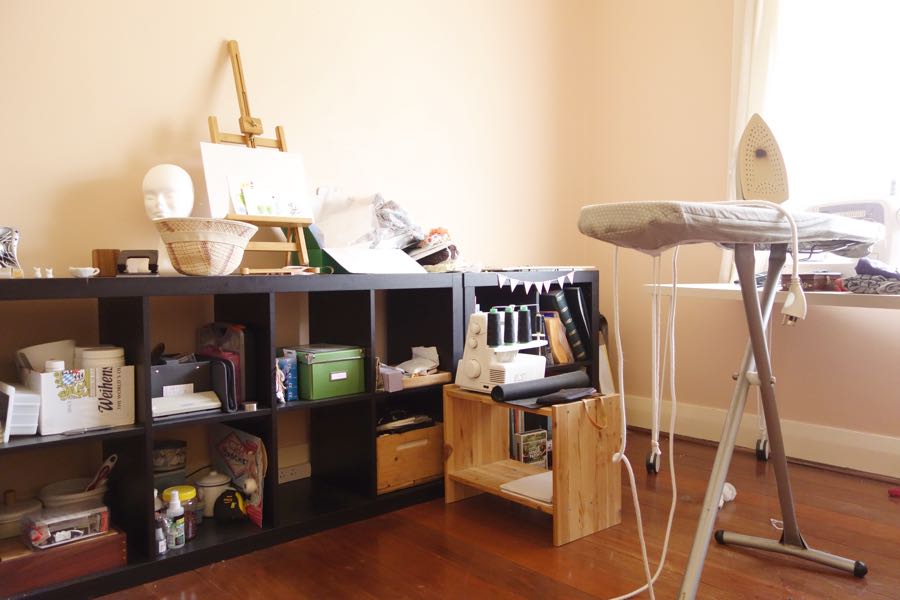
The craft room, for example, which is a work in progress as we save up for the right sort of furniture and decor. We're taking it slow. The last thing I want is to add stuff just to fill a gap, without considering whether it's the right function and style for us.
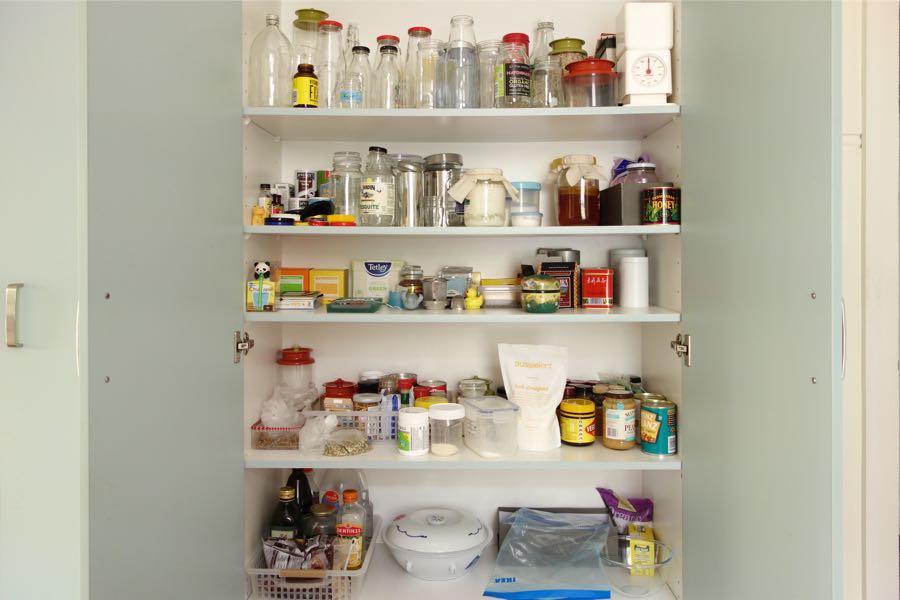
Here's the kitchen cupboard, featuring my supply of jars, baking powders, tea, ferments, spreads and sprinkles, oils, special tools and materials, and expired foodstuff used for household purposes (like yeast for trapping garden slugs).
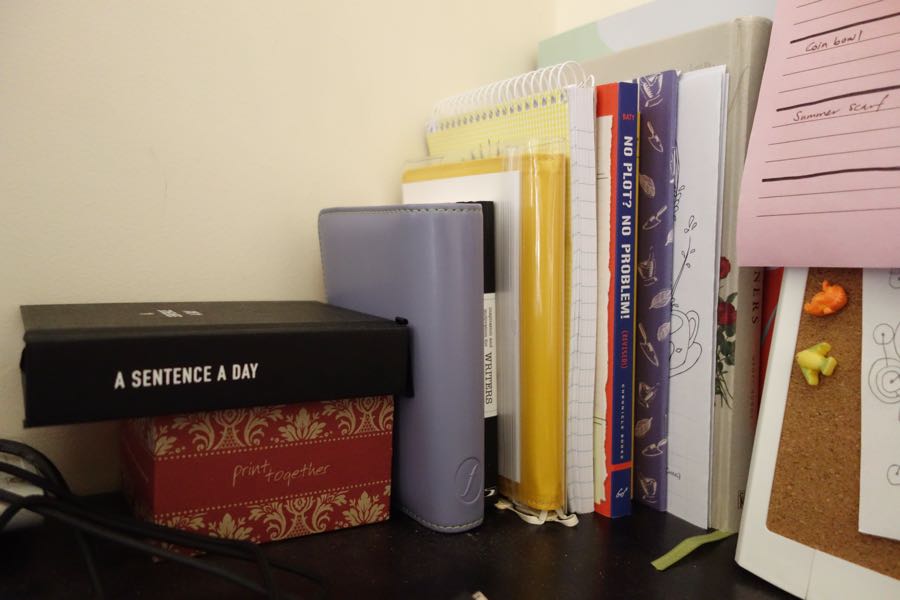
This is a tidy collection of planning tools and reference material, occupying the better half of my messy desk.
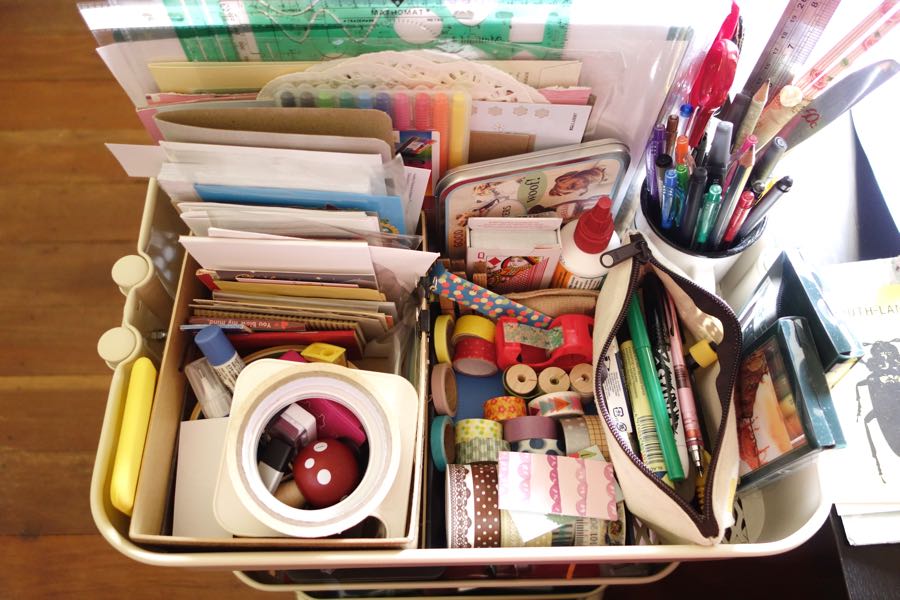
And the thing that brings me a lot of joy - my very organised stationery collection. Three tiers of hot Swedish RÅSKOG, filled with tools and supplies for everyday creativity and productivity.
With all this in mind, can I really say the konmari method has changed my life? After all, mess is mess, and there's still so much of it, so it's bunk, right?
WRONG. Since adopting the konmari system, I have:
- Found a career that's meaningful to me
- Moved to a nicer house with a bigger garden and more natural light
- Rekindled my love for books
- Rekindled my love of writing fiction
- Met other people like me with a similar hodge-podge of hobbies
None of this is down to magic. Throughout the year, I kept an eye out for disconnected or miraculous events, but found none. Coincidence and luck, sure, but not magic. What changes your life is the perspective you get from tidying up and applying a healthy, self-oriented criteria to your life choices.
When I first started, I'd be km-ing often late into the night. Sometimes I'd go to bed and fidget until relenting to the urge to go through my stuff again. We call this "konsomnia".
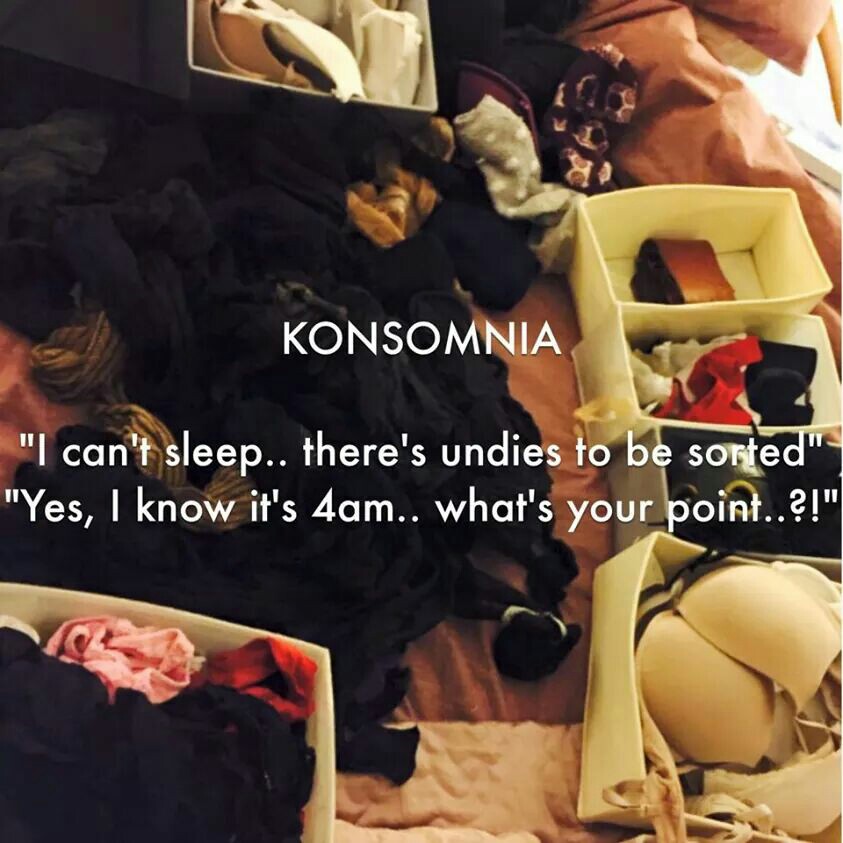
The next morning, I'd wake up sleepy but content that a part of my... life? mind? cognitive capacity? had become unshackled from surplus. I'd leave for work wistful, wanting to just stay home and tidy up some more.
The final stage of konmari has you sifting through sentimental items. This was hard. I threw out heaps of kipple I kept over the years. Some memories really aren't worth keeping.
Then a funny thing happened. I started looking at non-material things through the konmari lens. Friendships, relationships, sentiments, assumptions, prejudices, habits, customs - everything fell under the microscope. Even lifestyle factors like my sports schedule, my career, my hobbies.
Trying to find a system for organising my kitchen is a great representation of the bigger life picture here. I need something that works for the way I work, otherwise it won't stick and I'll be back to a mess. Not that mess itself is bad. Clutter isn't even that bad, in my opinion, as long as it's comprised of stuff that does bring you joy. I don't hate anything in my kitchen now, so I don't mind the mess while I figure out a system I can enjoy.
I think konmari works by helping you develop a habit of eliminating things that don't resonate with you. Rather than holding onto something out of obligation, guilt, or "just in case"-ness, you ditch it so you can focus on what does work, and make room for what might work.
People can argue all day about good reasons for keeping or discarding things, but no one can tell you what does or doesn't bring you joy. Minimalism didn't work for me because it was too pragmatic. Hoarding didn't work for me because it was too sentimental. Konmari has turned out to be the ideal system for an in-between, here-and-there person like me, still figuring out where they stand and where they're going.
I am happy to report that this konmari experiment has been a success. :)